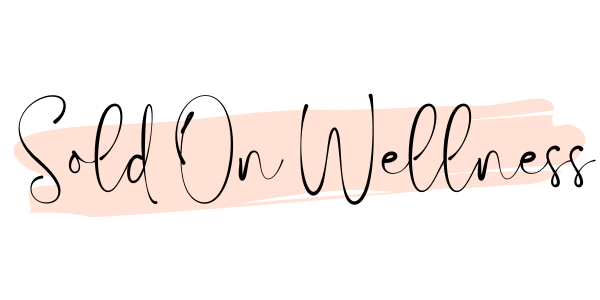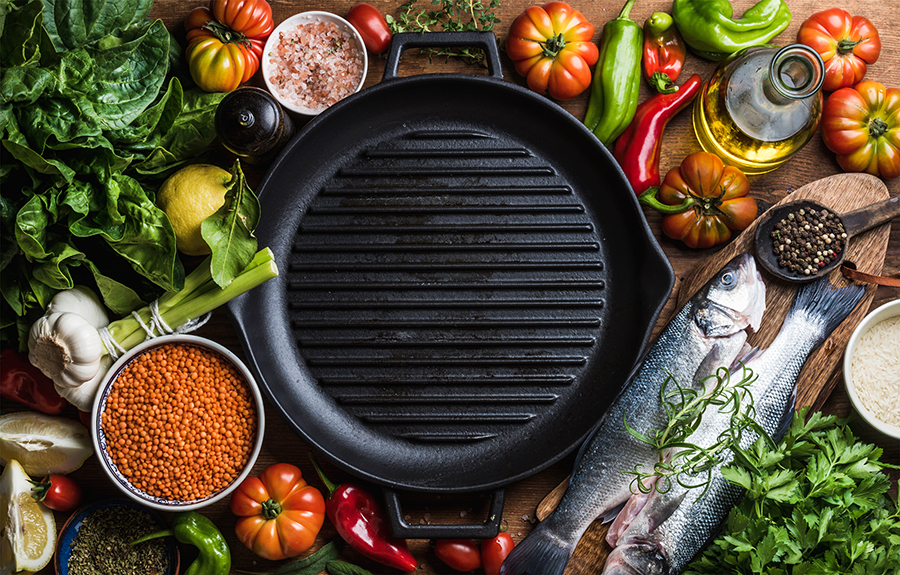This post contains affiliate links. For more information, visit my disclosure page.
You have maintained a healthy pattern for your family, creating healthy habits and cooking healthily. The last thing you want to be told is that there's something else compromising all your effort.
Homemade meals are highly encouraged because you know what goes into it and oh talk about the "vitamin L" (LOVE) in homemade meals! The question is what are you cooking with?
With the "ease" of cooking with non-stick cookware comes high concerns about dangerous chemicals and heavy metals that is released from your cookware while cooking.
Non-stick cookwares are made using poly- and perfluoroalkyl substances (PFAS). When these substances are heated, they release a carcinogenic chemical called perfluorooctanoic acid (PFOA).
In this article we will discuss types of health non-toxic cookwares you can pick from so you can be sure that healthy meal is free from unnecessary toxin/chemicals.
Effects of toxic Cookware?
According to the American Cancer Society, “PFOA has the potential to be a health concern because it can stay in the environment and in the human body for long periods of time. Studies have found that it is present worldwide at very low levels in just about everyone’s blood.”
Research findings have also linked high aluminum levels to central nervous system problems, In a 2013 study in Immunologic Research, it linked aluminum to Alzheimer's, ALS, and autism spectrum disorders.
“In laboratory animals given large amounts, PFOA can affect growth and development, reproduction, and injure the liver.” - the Centers for Disease Control and Prevention (CDC).
Now, I know are thinking, am I suppose to throw my (toxic) cookware away? that's an investment I do not have any budget for.
I quite understand that, however, with the concerns of cancer, and high colesterol, Neurotoxicity, Child developmental delays, Flu-like symptoms and Allergies, Liver Inflammation, thyroid issues and weakened immunes system linked to toxic cookware.
I will implore you to make the switch to health non toxic cookware and give yourself the peace of mind that your healthy meals are indeed HEALTHY.
How to Choose a Good Cookware?
I'll be talking on the four types of healthy non toxic cookware I'm familiar with, today.
Aluminum cookware is an excellent heat conductor. They are very light, affordable and easy to maintain but they have few health disadvantages.
On the other hand, stainless steel cookware is highly valued for its robustness and durability, especially as it is particularly suitable for cooking with gas.
There is cast iron cookware that fit almost all types of fire and is significantly more efficient for simmering.
Same thing for copper, but with a much higher price, just like anodized aluminum tools, Let dive in deeper:
1. Stainless Steel Cookware:
Stainless steel cookware is ideal for everyday use. Stainless steel is a particularly durable material although it doesn't conduct heat very well, It is still considered to be one of the safest healthy non toxic cookware.
For the booster, it is very often associated with aluminum and copper. That’s why stainless steel pan is solid but rises quickly in temperature. You can be sure it wont flake on you as well.
The stainless steel pan is still the best utensil for exceptional meat cooking. Yes, the meat will hang in the beginning, but it's normal. Under the effect of heat, it will retract, releasing the juices that will caramelize.
Do not try to turn the meat right away, wait until it does not stick to cook on the other side. The meat will be golden brown and grilled on the outside, soft and juicy on the inside.
To recover the juices and make a tasty sauce, you can deglaze with cream, wine or broth.
Contrary to what one might think, stainless steel is also suitable for mild cooking. Depending on the food or preparation, add a little fat or water to the stainless steel pan before cooking low or medium.
So that food does not catch and to limit the addition of fat, consider covering with a suitable lid. In this way, the vapor will condense on contact with the lid, forming droplets that will fall back into the preparation and keep certain moisture that allows it not to hang.
For stainless steel cookware that will go with you for a long time, choose an 18/10 model that includes 18% chrome and 10% nickel.
Stainless steel is one of the few materials that can go in the dishwasher, although hand washing is more advisable.
2. Cast Iron Cookware:
Cast iron is made up of iron and carbon. Cast iron pan or skillet does not undergo any chemical treatment, making it a 100% natural cooking utensil. The fork, metal spoon, the pan or cast iron pan is not will not get scratched soon.
If it takes time to heat up, the cast iron pan or pan retains the heat very well. Because of this, it is ideal for simmered dishes. As it keeps heat, you will have no trouble grabbing meat.
Enameled cast iron is distinguished from natural cast iron. As the name suggests, the first has an enamel coating that will protect the melt from oxidation.
Enameled cast iron may have a glossy or matte finish. Glossy enamel is more sensitive to sudden changes in temperature, which can result in cracks.
Being more absorptive, matte-enamel needs to be oiled before use, then regularly to keep a nonstick surface.
But like all coatings, it will inevitably become damaged and require new enameling so that its surface remains smooth and anti-adhesive.
Throughout uses, the natural cast iron will lock in the fat of the food it has cooked. So, this will give it a different natural glaze. The more you use your cast iron pan, the better it will be.
The main disadvantage of cast iron is its weight. And yes, it will make your arms to work! Often, cast iron pots and casseroles are made in one block, so be careful not to burn yourself by grabbing the handles!
3. Glass Cookware:
Glass cookware is another safe option for cooking, which can also be used in microwave, fridge, and freezer. They are also perfectly neutral and don’t change the taste of the food that is cooked or preserved.
The good thing about glasss cookware is its durability. The EWG recommends oven-safe glass with stainless steel and cast iron cookware.
A quarter of a century ago, the brand -Vision- had caused a sensation by reviving the taste of cooking through the Pyrex. Pyrex (which is a registered trademark today) is a type of glass cookware that has the advantage of withstanding high temperatures that can reach 400 ° C.
This material was invented in the early 20th century by E. C. Sullivan and W. C. Taylor, two Americans who worked at Corning Glass Works Laboratories.
Simple to use, to maintain, representing no health, glass cookware is safe for cooking. From the fridge to the freezer, from the microwave to the oven, the advantage of Pyrex glassware is that it can be used "everywhere."
4. Copper Cookware:
Copper cookware is easily recognisable by its golden pink dress; copper is the material that best conducts heat. No wonder it is often found in the kitchen of great chefs!
Although copper cookware is safer than other options, there is a risk associated with 100 percent copper cookware which could lead to an overconsumption of copper.
However, it is possible to have a copper deficiency because many diets are low in copper especially if you suffer from a digestive disorder that affects nutrient absorption. The is very unlikely you'll get copper toxicity from copper cookware though, but for peace of mind and to be use you don't have any trace of copper in your diet, then you might to choose not use 100 percent copper cookware.
So, Which should you go for?
Depending on your needs, you can opt for a set of pots in stainless steel or cast iron if you prefer the strength of the utensils. These materials are heat resistant and are particularly suitable for simmered dishes.
You can purchase a set of copper pots as it is a luxury material that preserves and reveals the aroma of food.
A set of ceramic pans can make cooking and cleaning easier, but its lifespan is significantly reliant on your handling.
Make the Right Choices of Pans
Having a healthy non toxic cookware is essential for healthy cooking. Let's not make the mistake of mostly relying on price, neglecting other factors such as the materials, use, maintenance and ergonomics of coveted pans.
It is easy to get lost in front of the variety of cookware offered in supermarkets. So you must have some criteria to take a closer look at before giving in to the "promotions" of the month.
Conclusion
You can never be sure of how many toxins your body has to deal with daily. The rise in toxicology-related illness today is related to what we are eating and might not necessarily be a case of not eating non-organic foods but the fact that we are using the wrong cookware.
Every home deserves the right to have healthy non toxic cookware sets, and there is no better way to choose a non-toxic cookware that has been proven by popular reviews.
You have the liberty to choose any of the above sets and start your non-toxic journey in cookware usage.
Key Takeaway
The reports of toxic cookware should be a enough reason for us to really consider the switch to a safer option. The dangerous chemicals from toxic cookware such as PFOA and PFOS poses alot of concerns. A happy life begins with a healthy life, if you are looking at phasing out the possibilities of any toxins in your food, then you should consider health non toxic cookware.



Yep, me and my family are very adamant about cooking with non-toxic pans. We actually tried using a marble variation from Michelangelo to get something that works better and is less toxic.
We’ve actually fallen in love with it and my mom wants more! Everything you put in it slides and glides cooking effortlessly.
I hadn’t thought about using copper cookwear though, that is really genius! I will definitely be putting it on my wishlist, thanks!
That’s amazing! healthy cooking includes the cookware we use. glad you found this informative!
This is lovely and i must commend you for writing out this wonderful article. There is a quote that says health is wealth, so the best favour we can do for our life is to take good care of our health. I appreciate the fact that you losted out the Effects of toxic Cookware and how to Choose a Good Cookware. This is highly insightful and i must say its an eye opener for me.
Thanks for sharing
Thanks Ola! I appreciate your time and I’m glad you found this insightful.
I had known that some cookware cause issues, but I never thought that it was that serious.
great blog. I really so appreciate it.
I am someone who cooks everyday for my family and I never really took this into consideration, until now.
really interesting and informative info here. Being aware of toxicity is a little scary, since I’m always cooking.
Yeah, I get the scary part, felt the same way as well but then knowing about these things regarding our health puts a lot in perspective. Happy you enjoyed the post.